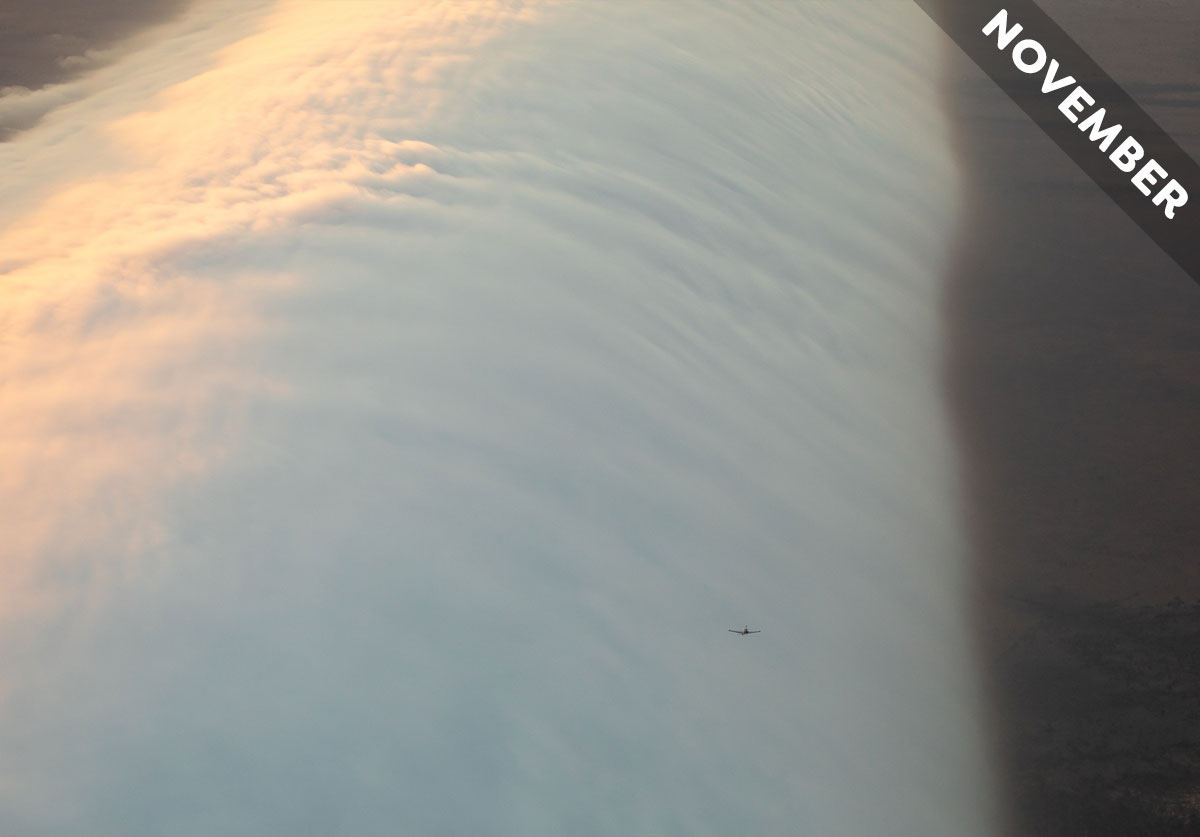The Morning Glory Cloud: Surf’s Up (Literally)!
Glider pilots have a special relationship with clouds. For instance, the thermals they use to gain lift are the very same air currents that cause fair-weather Cumulus clouds to form. And never is this relationship more special than with the Morning Glory cloud that forms in the Gulf Savannah region of northern Queensland, Australia. This, after all, is the cloud that glider pilots surf just like regular surfers on an ocean wave.
During the spring months of September to early November, the Morning Glory cloud rolls in from the open waters of the Gulf of Carpentaria over Queensland’s tiny settlement of Burketown. At this time of year, the outback town, with its population of just 204, is a hotspot for pilots from around the world who come in search of the cloud they can surf. Shaped like an enormous tube, forming low in the sky, it rolls in over the coast from the north-east stretching from horizon to horizon. Morning Glory is the local name for what is an extreme form of a roll cloud that is known more formally as a Stratocumulus volutus. It can extend as much as 600 miles (700 km) in length. And the reason Morning Glory clouds are such a draw for gliders is that they form within travelling waves of air.
Known as solitary waves, these begin life the day before over the Cape York Peninsula in the north-east of Australia. The heat of the afternoon sun on the peninsula draws in cool sea breezes from both east and west that collide over the land in a weather phenomenon called convergence. The collision of breezes sets in motion solitary waves of air that head off to the south-west and roll over the waters of the Gulf of Carpentaria through the night, only reaching the Queensland coast near Burketown by early the next morning. For much of the year, such waves of air roll along invisibly, but during the springtime in the region there’s enough humidity in the low atmosphere for roll clouds to form down their length. These Morning Glory clouds are what the glider pilots look for because they reveal where the air is lifting at the front of the waves. When a Morning Glory cloud appears on the horizon at first light, the pilots rush to their sailplanes to get airborne before it arrives and surf the travelling cloud as it rolls in over the coast.
Michael Zupanc photographed this Morning Glory from his glider while flying near Burketown. The small powered aircraft you can see in the distance shows the cloud’s impressive scale. The front of the cloud rises and its back sinks as it travels along at up to 40 mph (65 km/h). So long as the pilots manage to stay to the front, where the lifting air is wonderfully smooth, they can surf clouds for huge distances and at high speeds over the remote Australian outback below.
Morning Glory (Stratocumulus volutus) spotted by Michael Zupanc near Burketown, Queensland, Australia. View it in the photo gallery.



